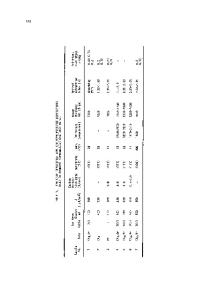Quantitative evaluation of adhesion of diamond coatings
- PDF / 250,001 Bytes
- 6 Pages / 612 x 792 pts (letter) Page_size
- 75 Downloads / 378 Views
MATERIALS RESEARCH
Welcome
Comments
Help
Quantitative evaluation of adhesion of diamond coatings Qi Hua Fan,a) A. Fernandes, and E. Pereira Department of Physics, University of Aveiro, 3810 Aveiro, Portugal
J. Gr´acio Department of Mechanical Engineering, University of Aveiro, 3810 Aveiro, Portugal (Received 10 April 1998; accepted 14 July 1998)
This paper presents a model to evaluate quantitatively the adhesion of diamond coating according to indentation tests. It is found that small indentation load causes round spallation of the coating, no matter what the shape of the indenter. An exponential sink-in deformation of the coating under the indentation is proposed [y 2a 3 exps2bxd]. The deformation stress at the spallation edge is considered the coating adhesion. Using an experimentally observed relation of the indentation load versus the film spallation radius, we evaluate the adhesion of a diamond coating on copper to be about 1.921 –1.956 GPa, which is in agreement with thermal quench results. The validity of this model is also verified by its self-consistence. I. INTRODUCTION
Diamond coatings are attractive for potential applications. The adhesion of the coatings to different substrates is a basic requirement. So, quantitative evaluation of the coating adhesion is important. Common methods for accessing a coating adhesion include pull-off tests, indentation tests, and scratch tests. However, there are some problems when testing the adhesion of diamond coatings. For example, the pull-off tests are accurate and quantitative, but are restricted by the strength of the adhesive, normally weaker than 90 MPa. Thus, the adhesive usually fails prior to the coating.1,2 Adhesion scratch tests show a dependence on the coatings and the substrate materials.3 Furthermore, the high hardness of diamond coatings leads to a cleavage of the scratch tip, with obvious consequences in both economics and repeatability. The microindentation method allows a semiquantitative evaluation of the adhesion of different coatings by comparing the slope of dependent load versus film spallation radius.4 However, an absolute measurement of the adhesion still needs to be developed. It has been noted that the indentation often causes a spallation of the film.4,5 The dimension of the delamination area is related to the coating adhesion. This paper presents a model to predict quantitatively the adherence of diamond coating according to the spallation produced by the indentation. II. EXPERIMENTAL
Adherent diamond films were coated on copper with a titanium interlayer. The copper substrates were 1 mm thick and 10 3 10 mm2 square and the titanium interlayer, deposited by dc sputtering, was about 2 mm thick. Diamond deposition was conducted using an ASTeX 2.45 GHz microwave plasma chemical vapor deposition (MPCVD) system. The process gases were 1142
http://journals.cambridge.org
J. Mater. Res., Vol. 14, No. 3, Mar 1999
Downloaded: 14 Mar 2015
H2 , CH4 , and O2 . The deposition parameters included microwave power 2500 W, gas pressure 90 Torr,
Data Loading...











